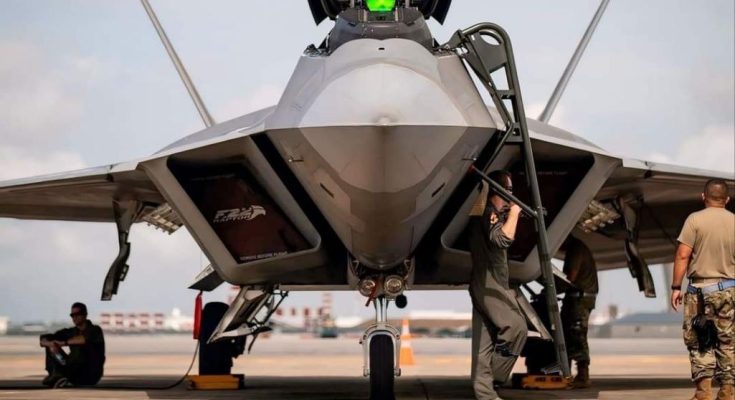Why China and Russia Can’t Match the F-22 Raptor’s Dominance
The F-22 Raptor, developed by Lockheed Martin for the United States Air Force (USAF), is considered the world’s most advanced fifth-generation fighter jet. With its unmatched stealth, superiority in air combat, and cutting-edge technology, the F-22 has set a new benchmark for fighter aircraft. Despite significant advancements in military aviation by China and Russia, neither nation has been able to produce a fighter jet that matches the F-22’s dominance. This article explores the key reasons why China and Russia cannot replicate or surpass the F-22’s capabilities.
1. Stealth and Radar-Absorbing Materials
The F-22 Raptor’s stealth capabilities are one of its most critical advantages. Its design incorporates advanced radar-absorbing materials and a sleek airframe that significantly reduce its radar cross-section (RCS). The F-22 can evade detection by enemy radar systems, even from long distances, making it nearly invisible to adversaries. This low observability enables the F-22 to penetrate enemy defenses, carry out air superiority missions, and engage targets without being detected.
In contrast, while China’s J-20 and Russia’s Su-57 are considered stealth fighters, their stealth designs and technologies do not match the F-22 in terms of radar evasion. The J-20, for instance, has a larger cross-section and lacks the same level of signature reduction achieved by the F-22, making it more vulnerable to advanced radar systems. Similarly, the Su-57, despite being equipped with some stealth features, still falls short in its ability to completely evade detection, especially in contested airspace.
2. Superior Air Superiority Capabilities
The F-22 was specifically designed as an air superiority fighter, excelling in combat scenarios that demand quick response times, high maneuverability, and long-range engagement. Its advanced avionics, including the AN/APG-77 radar and sensor fusion, provide the pilot with a comprehensive, real-time view of the battlefield. This allows the F-22 to track and engage multiple targets simultaneously, even in cluttered environments, and outmaneuver enemy fighters in dogfights.
Both the J-20 and Su-57 have air superiority as part of their design objectives but have not been proven in combat to the extent that the F-22 has. The Su-57, for instance, lacks the same level of sensor fusion and radar sophistication that gives the F-22 an edge in detecting and engaging adversaries from beyond visual range (BVR). While the J-20’s long-range capabilities are impressive, its performance at close range combat remains unproven, a critical area where the F-22 excels due to its superior agility and supercruise ability (sustained supersonic flight without afterburners).
3. Power and Performance
The F-22’s twin Pratt & Whitney F119 engines give it an impressive thrust-to-weight ratio and the ability to supercruise — that is, fly at supersonic speeds without the need for afterburners. This feature gives the F-22 unmatched speed and maneuverability while maintaining fuel efficiency, an essential advantage in modern air combat. The aircraft’s agility at high speeds and in extreme conditions, such as high-G turns, allows it to outmaneuver almost any adversary.
While the J-20 and Su-57 are equipped with powerful engines, they do not match the performance metrics of the F-22. The J-20’s engines have been criticized for not providing the same thrust-to-weight ratio, meaning it may not be able to match the F-22’s supercruise capability or maneuverability in a high-speed dogfight. The Su-57, while designed for agility, still faces limitations in terms of its overall aerodynamic design and engine performance, making it less efficient in terms of sustained speed and high-maneuverability combat.
4. Advanced Avionics and Sensor Fusion
The F-22’s sensor fusion is another key factor that sets it apart. The aircraft integrates data from multiple sources, including the AN/APG-77 radar, infrared search and track (IRST) systems, and electronic warfare (EW) systems. This fusion of data gives pilots an overwhelming advantage in terms of situational awareness, allowing them to identify and engage targets well before they are detected by the enemy.
Although both the J-20 and Su-57 have been equipped with advanced sensors, their systems are not as refined as those of the F-22. The Su-57’s radar, for instance, has not been demonstrated to match the capability of the F-22’s radar, which is optimized for detecting stealthy targets at long ranges. The J-20, while equipped with advanced avionics, still suffers from challenges related to its sensor integration, reducing the overall effectiveness of its situational awareness.
5. Battle-Tested Experience
The F-22 has seen combat-tested success, with its advanced capabilities proven in real-world scenarios. It has participated in several combat exercises and operations where it has demonstrated its superiority over older aircraft and rivals. Its performance in training environments with other fifth-generation fighters, such as the F-35, has solidified its reputation as the gold standard of air superiority fighters.
In contrast, both the J-20 and Su-57 are still in the developmental or early operational stages, with limited combat experience. While both aircraft have shown promise on paper, they have not yet been tested in the same high-intensity, multi-threat combat environments where the F-22 has consistently proven its dominance.
Conclusion
Despite the impressive advancements made by China and Russia in their fighter jet programs, neither the J-20 nor the Su-57 can match the F-22 Raptor’s dominance in air superiority. The F-22’s unmatched stealth, sensor fusion, air combat capabilities, and battle-tested experience ensure that it remains the top-tier fighter jet on the global stage. While China and Russia are continuing to improve their aircraft, the F-22’s technological advantages and operational effectiveness ensure it retains a significant edge in modern air combat.



